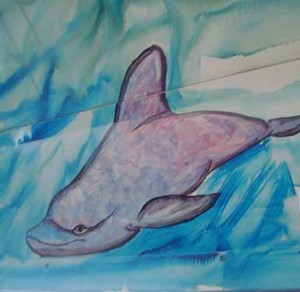Where does innovation come from?
The New Yorker recently featured an article on the topic of great white sharks. Giant, roaming hunting machines; white sharks have survived basically unchanged for hundreds of millions of years. They prowl the oceans alone covering thousands of miles. Because these sharks are such solitary creatures, there are still many things we have yet to learn about them. For example, sharks are coldblooded, yet researchers recently discovered that white sharks can raise the temperature of their blood by up to fifteen degrees Fahrenheit. They can remain in northern waters much later in the year than previously thought. Although there are hotspots where great white sightings are more common, (anywhere there are seals on which to snack), scientists have yet to locate where great white sharks breed.

Great white sharks are like Innovation.
1. We don’t really know where innovation breeds or when and how it’s going to show up.
2. There are some hotspots where it’s more likely to show up.
3. When innovation does show up, you better be ready. Not being prepared for the opportunity when it comes can cost an arm and a leg.
So where are the innovation hotspots? Where are the seals in the sea of your organization? Where is the bait for innovation? And how might we prepare for its arrival?
Three places.
The first is from deep within the organization, where the designers and builders of your product reside. In a technology company, these are the tinkerers who design, build and prototype your product. When they make a technological breakthrough, they want to put it to use. They figure out what the product can do next, and they build it, or more and more, they code it. It’s not customer driven, or market driven. It’s technology driven. It’s the Field of Dreams model (or maybe the Apple model). If you build it they will come.
The second is from the strategy or new business development group. The strategy group, often senior management, (hopefully somebody in the organization) is thinking about where the market, technology, trends, and the industry might be headed, and looking for the new markets of the future. This is innovation with an eye on, not present customers, but potential future customers.
Seeing how your customers are using your product, what they wish for, and paying attention when they complain or when they pursue a different provider, is the third innovation hotspot. The sales team is the front line for innovation in any organization. “In innovation, the rubber hits the road,” Jeff Immelt, CEO of General Electric claims, “where salespeople talk to customers.”
Of the three hotspots, the sales team is least likely to have training in innovation skill building. Sales people have the opportunity to be in the role of instigating and provoking innovation in an organization. Yet organizations are more likely to train their strategy and new product development teams in innovation than they are salespeople. Only if salespeople have common language, awareness, and process training around creativity and innovation, can they systematically provoke innovation.
When users unearth an opportunity to innovate, don’t let it cost you an arm and a leg. If you want your salespeople to harness the hotspot and be an engine for innovation, you need to give them the tools to build that engine. Prepare by training your sales team.
Tags: organizational hotspots for new ideas, sales and innovation, strategy